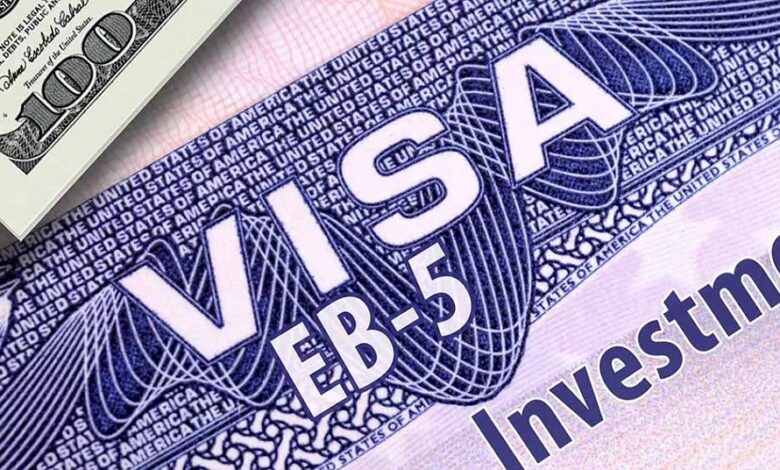Understanding the US EB5 Visa Program – A Comprehensive Overview

The EB-5 program allows foreign investors to secure permanent residency in the United States by making significant investments and creating jobs. The program is a popular investment option and an excellent option for families seeking green cards.
USCIS sets aside a limited number of EB-5 visas each year for investments in targeted employment areas (TEAs). Investors must demonstrate that they created at least ten full-time jobs for U.S. workers within two years of their conditional permanent residency grant.
EB-5 Program Overview
The United States government administers the EB-5 immigrant investor program. This program offers foreign investors a green card based on an investment in a commercial enterprise that creates or preserves ten jobs for American workers.
It is a unique and essential program for foreign nationals who want to invest in the United States and gain permanent resident status and for U.S. developers seeking inexpensive capital.
To boost the economy by promoting foreign capital investment connected explicitly to job creation, Congress established the EB-5 program in 1990. The Department of Homeland Security’s United States Citizenship and Immigration Services (USCIS) runs this program.
An investor must put $800,000 into an enterprise or an EB-5 Regional Center that, within two years of the investment, creates at least ten full-time jobs for Americans to be eligible for a green card. Indirect and induced jobs can also count towards the job creation requirement. The program was initially criticized for being too complex and having high denial rates, but this has improved significantly.
EB-5 Investment Requirements
Several requirements to apply for a green card through the US EB5 investor program. These include the minimum investment amount, the lawful source and path of funds, and creating or preserving a new commercial enterprise.
The current minimum investment level is $1,800,000. However, if the EB-5 project is located in a Targeted Employment Area (TEA), often a rural or high unemployment area, the minimum investment amount may be decreased to $900,000. The TEAs were added to the US EB5 Visa requirements to promote investments in the neediest regions.
EB-5 applicants can invest in various enterprises, including corporations, partnerships (general or limited), sole proprietorships, business trusts, and holding companies with wholly-owned subsidiaries. Choosing the proper structure for your EB-5 investment is essential, as it can help protect your capital and reduce your risk of loss.
EB-5 investors must also meet the job creation requirement, which requires them to be actively involved in their new commercial enterprise. It may include managing the business or working as a policy-maker in the organization. It’s best to seek professional legal guidance to ensure your EB-5 investment meets the program’s requirements.
EB-5 Job Creation Requirements
The EB-5 program stimulates the United States economy by encouraging foreign nationals to invest their funds in new or existing commercial enterprises that create jobs. The minimum investment requirement varies by region, but if the business is located in a targeted employment area (TEA), the required amount is only $800,000.
In addition to the requisite capital, an EB-5 investor must also be able to show that their investment will create ten full-time U.S. jobs within two years of receiving conditional permanent residency. For direct EB-5 investments, these jobs must be directly created by the commercial enterprise that received the investment.
However, regional center EB-5 investments allow investors to include indirect and induced jobs in the number of job creations they must demonstrate. In these cases, reasonable methodologies can be used to estimate how many jobs will be generated due to the EB-5 project.
In addition, the EB-5 program is designed to protect the interests of U.S. citizens and permanent residents, so an EB-5 project needs to create a sufficient number of full-time positions. In some cases, qualified employees may share a full-time job.
EB-5 Regional Centers
An EB-5 regional center is an economic development organization approved and regulated by USCIS to promote investment, employment, and immigration. Typically, these organizations pool funds from several EB-5 investors and use the combined capital to fund a project that creates jobs for the community.
Aspiring immigrant investors who wish to avoid the high-risk elements of direct investments but still need to fulfill the EB-5 program’s job creation requirements typically pick regional hubs. They also offer an easier route to obtaining a green card, as they can help EB-5 investors navigate the complexities of the program and avoid costly mistakes.
Another advantage of investing through a regional center is that they can manage multiple EB-5 projects at once. It can increase returns on the EB-5 investment and provide a more significant potential for immigration benefits.
The spending measure enacted by Congress late Thursday will extend the EB-5 regional center program through Fiscal Year 2027. The legislation imposes new minimum investment amounts, allocates a portion of the EB-5 immigrant visa quota to investments in rural areas and TEAs, and creates an integrity fund to oversee compliance for all parties involved in the program.
EB-5 Visas
The US EB5 visa program allows foreign investors to gain lawful permanent resident status (green card) in the United States. Initially created in 1990, the EB-5 program has allowed thousands of foreign nationals to obtain their green cards through investment in new commercial enterprises.
The EB-5 program is managed by the United States Citizenship and Immigration Services (USCIS). It offers a path to permanent residency for foreign nationals who invest in new businesses that create jobs.
Applicants must show that their funds come from lawful sources. It can include salaries, stocks, and other assets.
Successful applicants will receive conditional green cards for two years. They can remove the conditions at the end of the two years and receive a regular green card.
The EB-5 program is a popular option for foreign investors, but it’s essential to understand all the requirements before investing. An experienced EB-5 lawyer can help you navigate this complex program and make your investment eligible.




